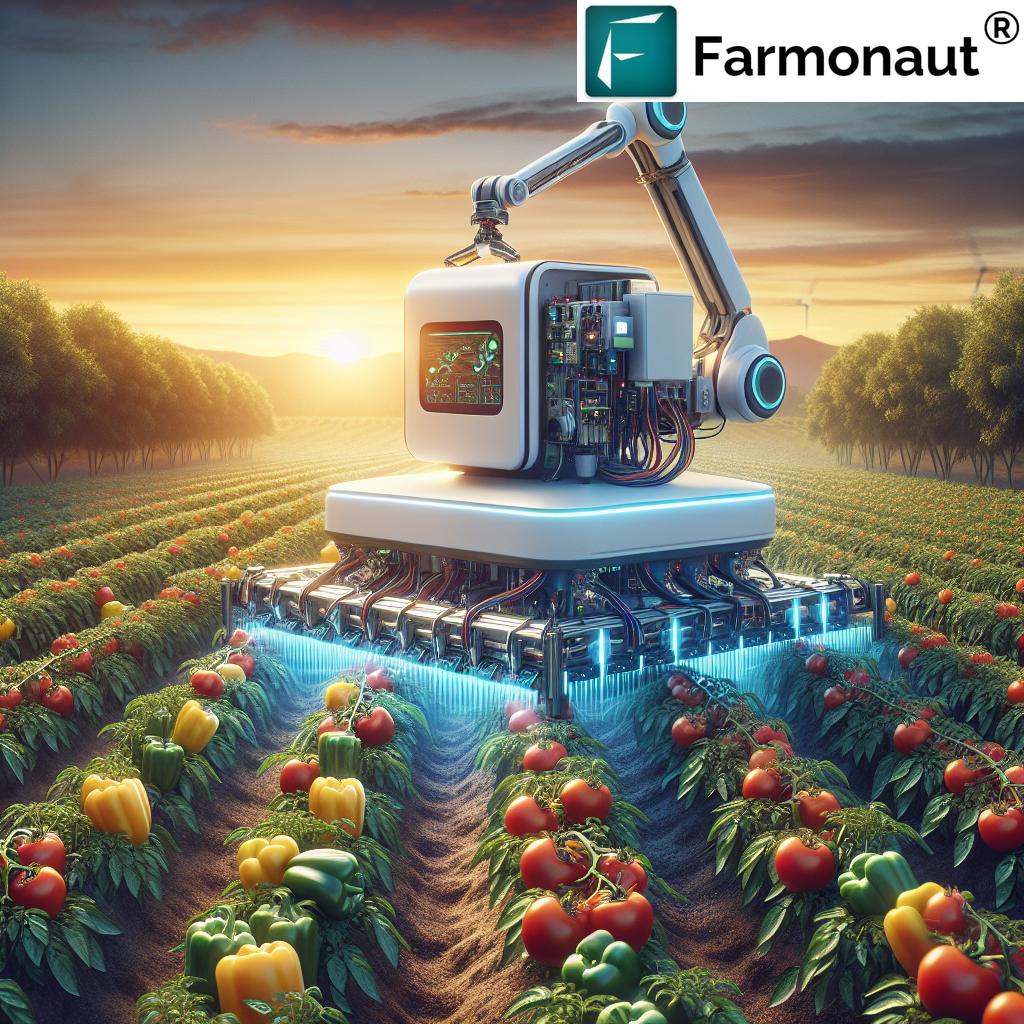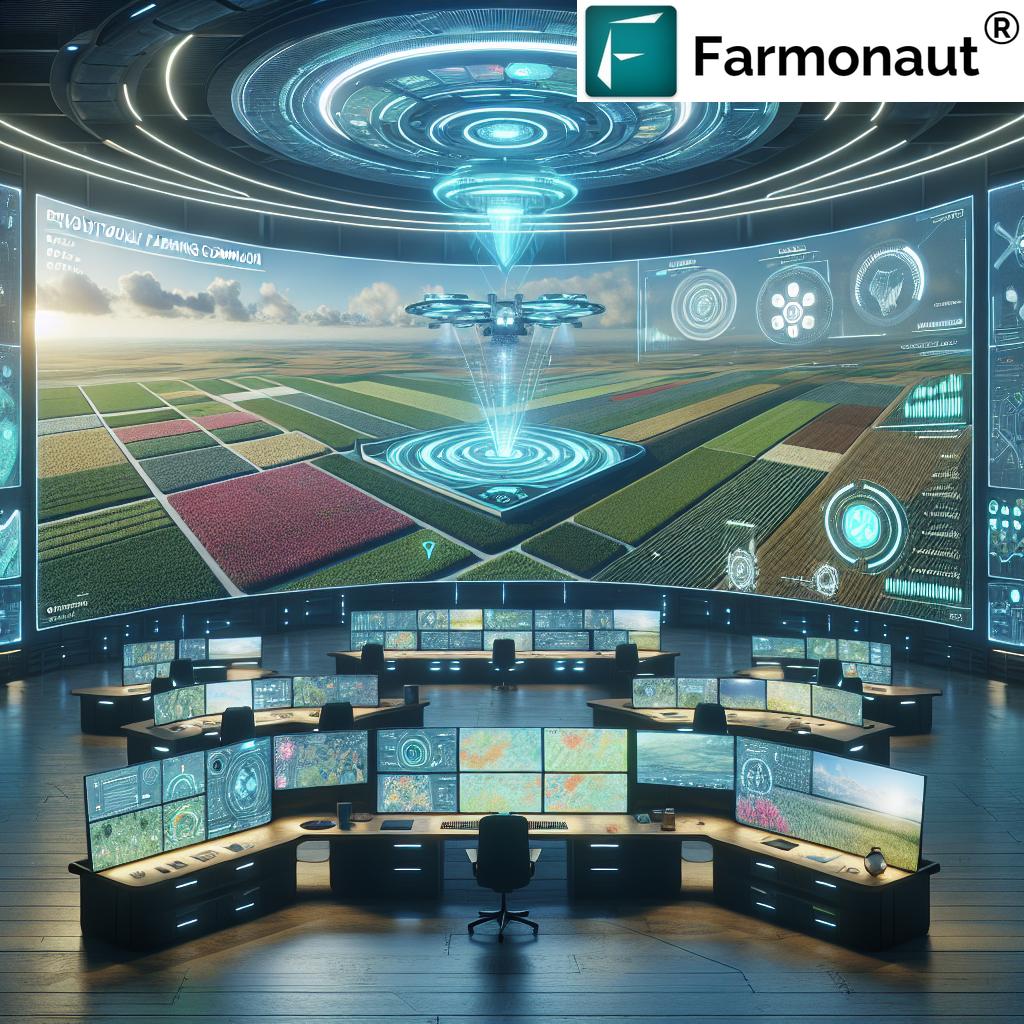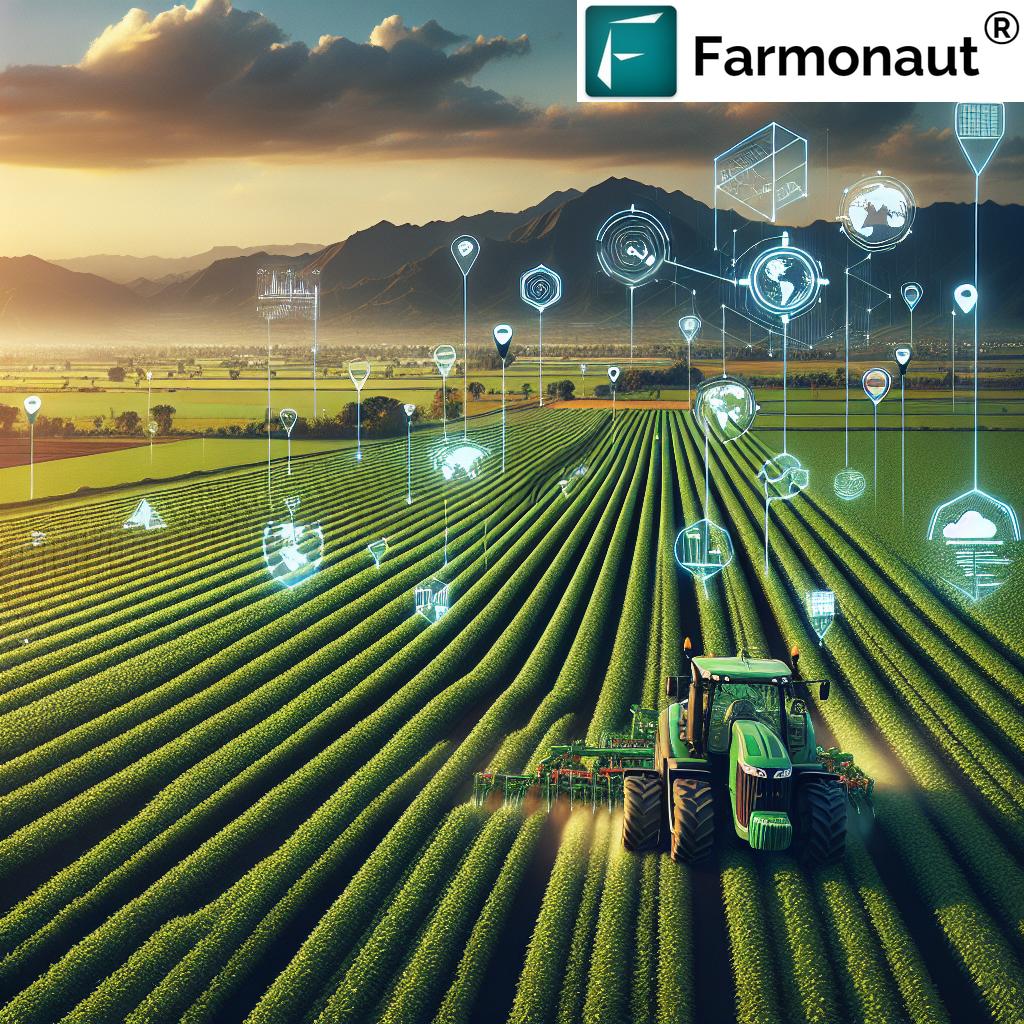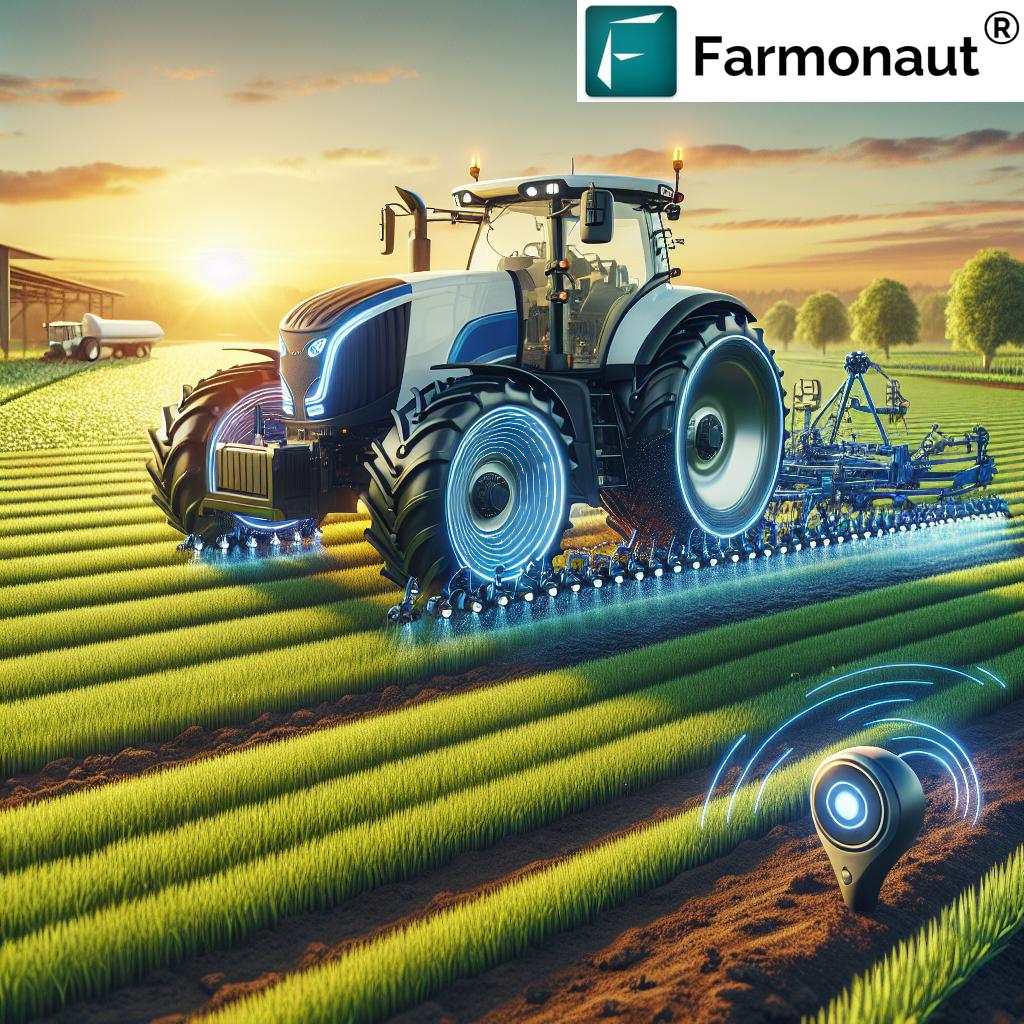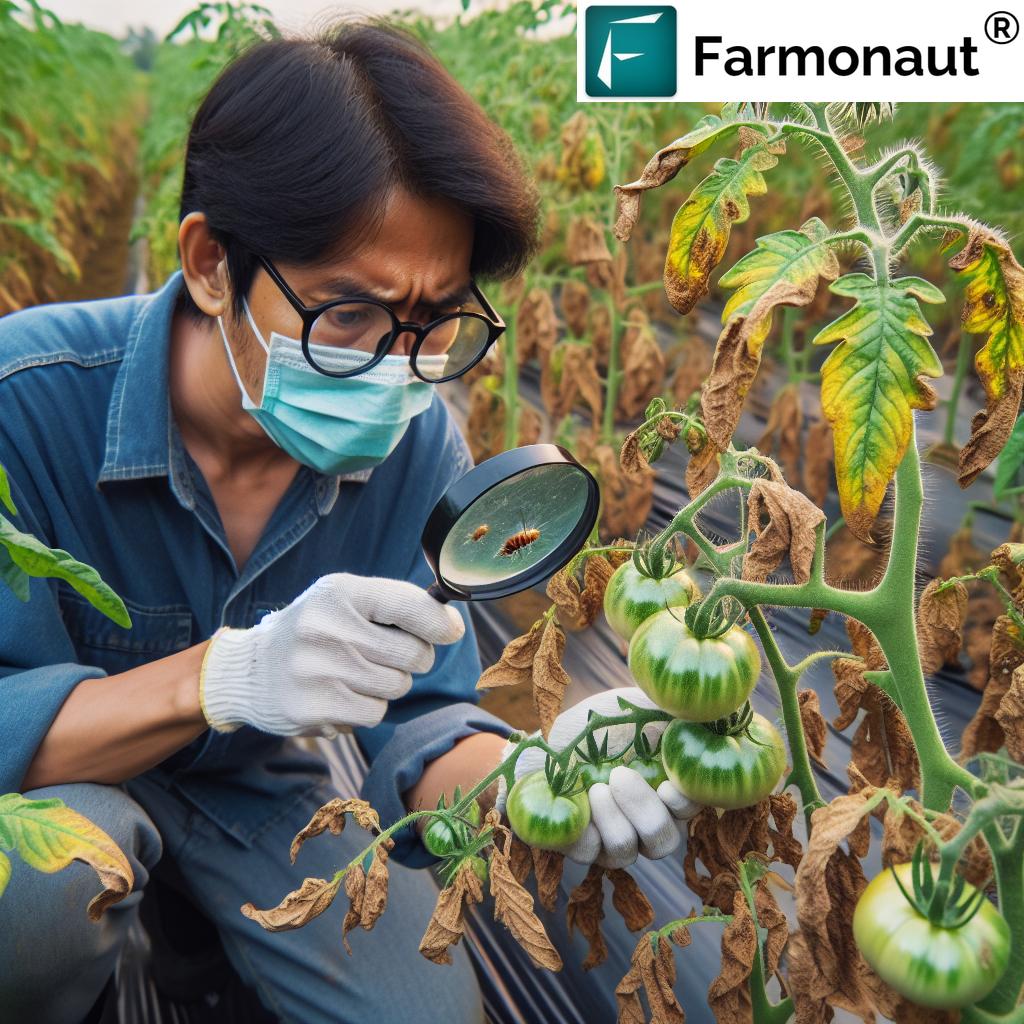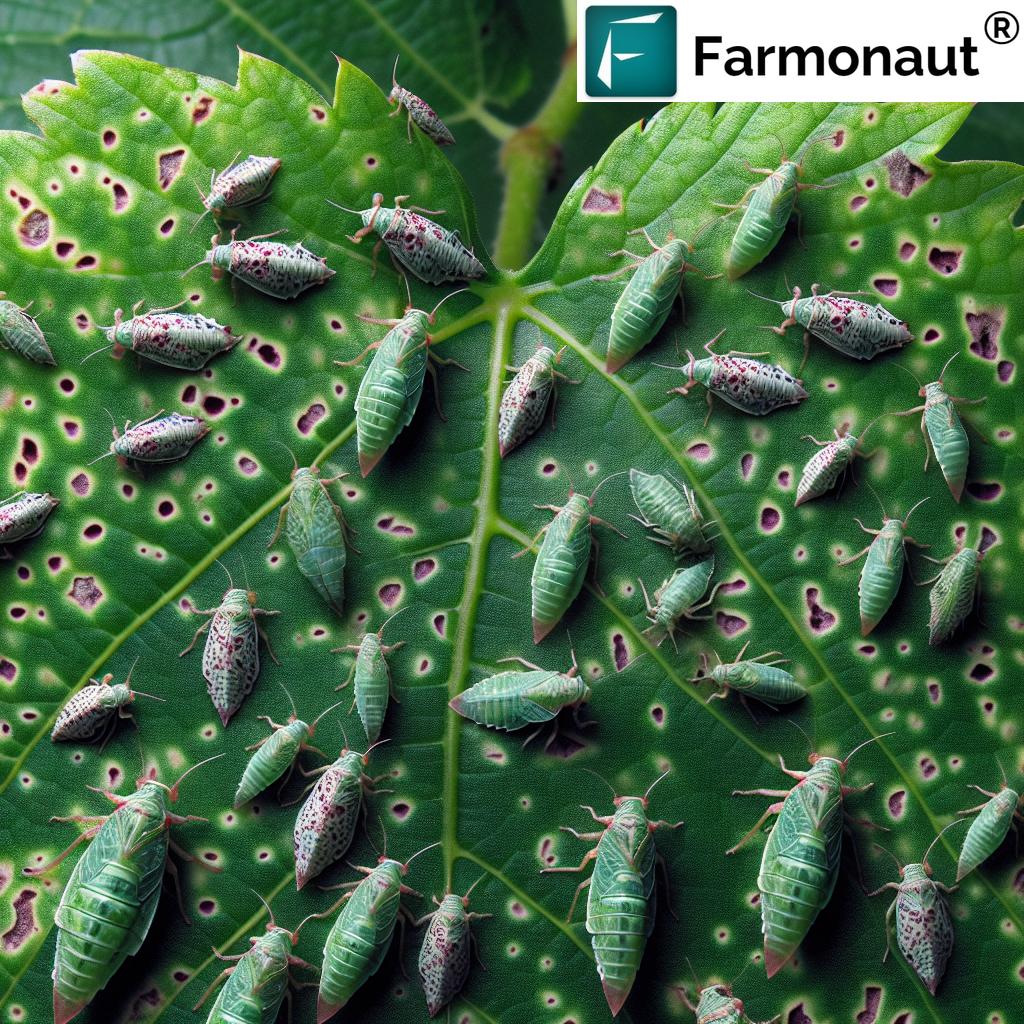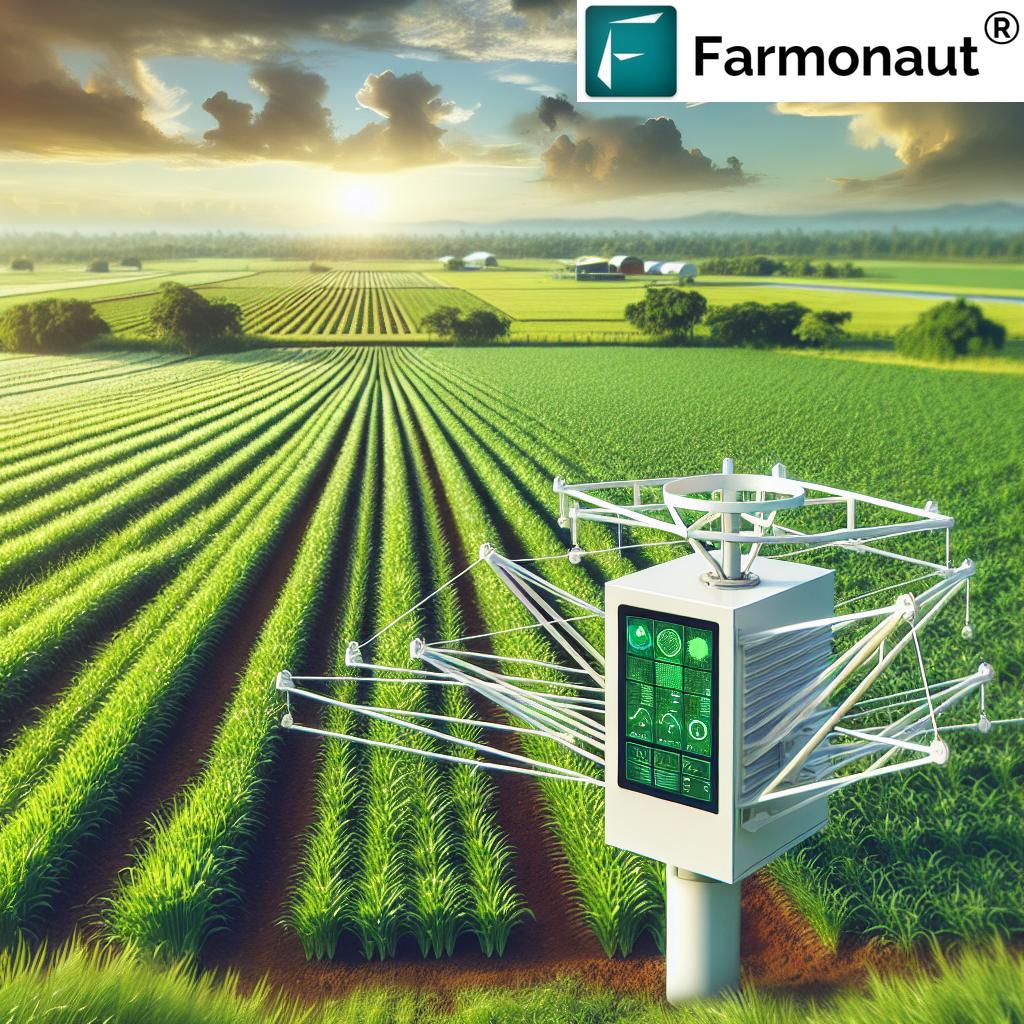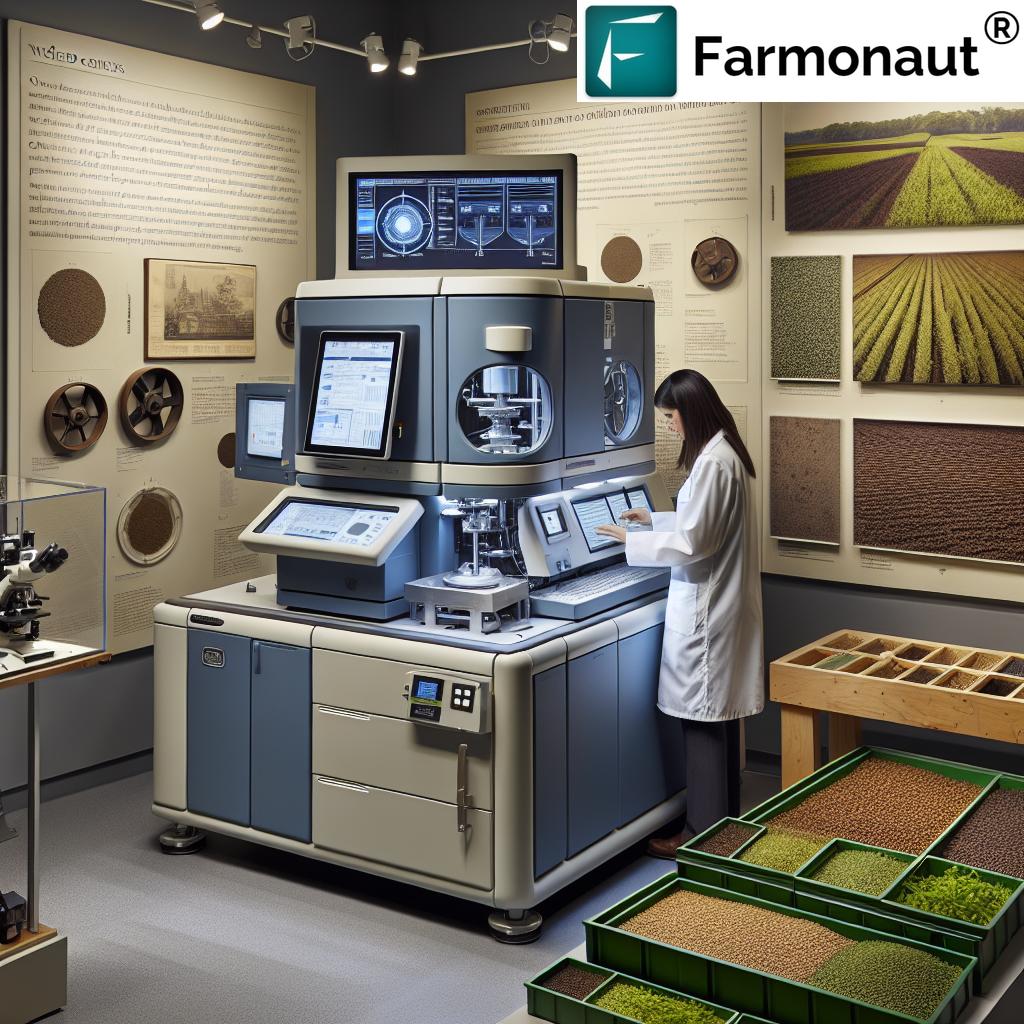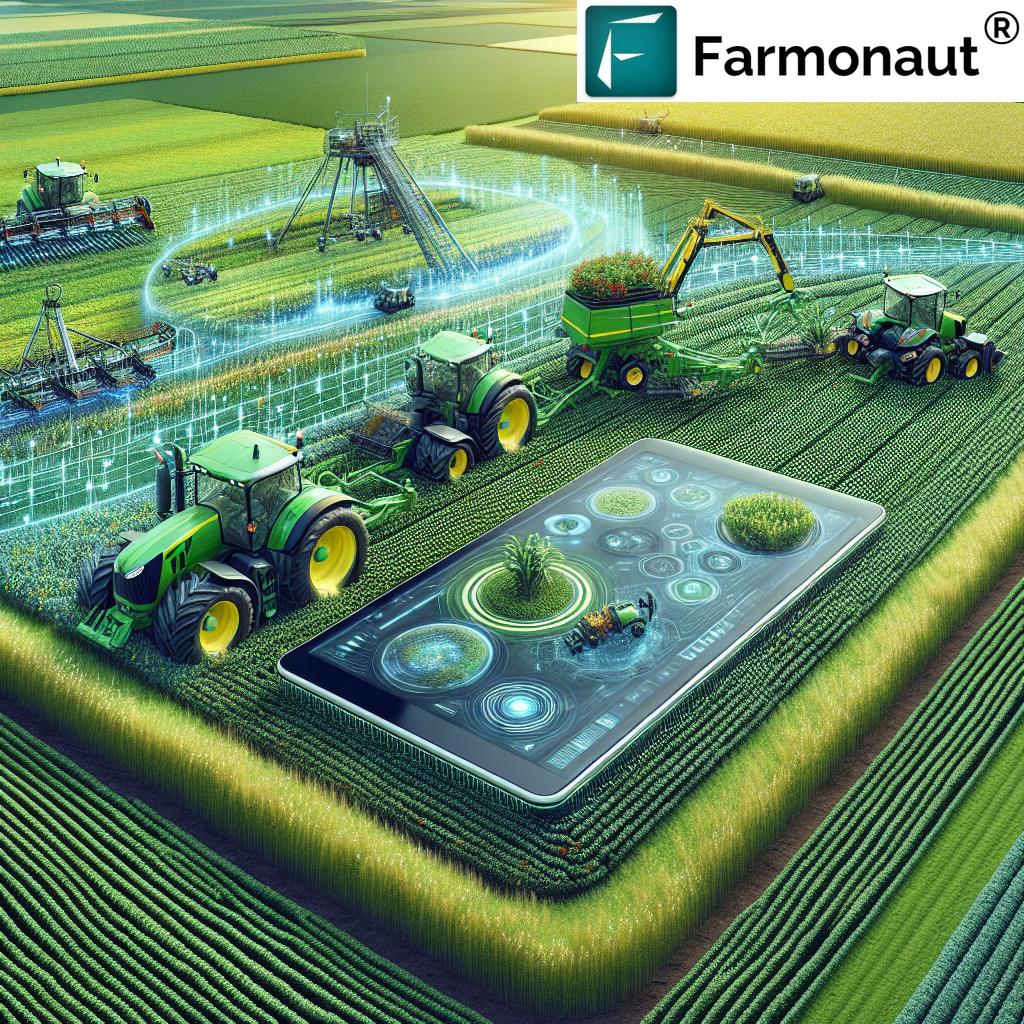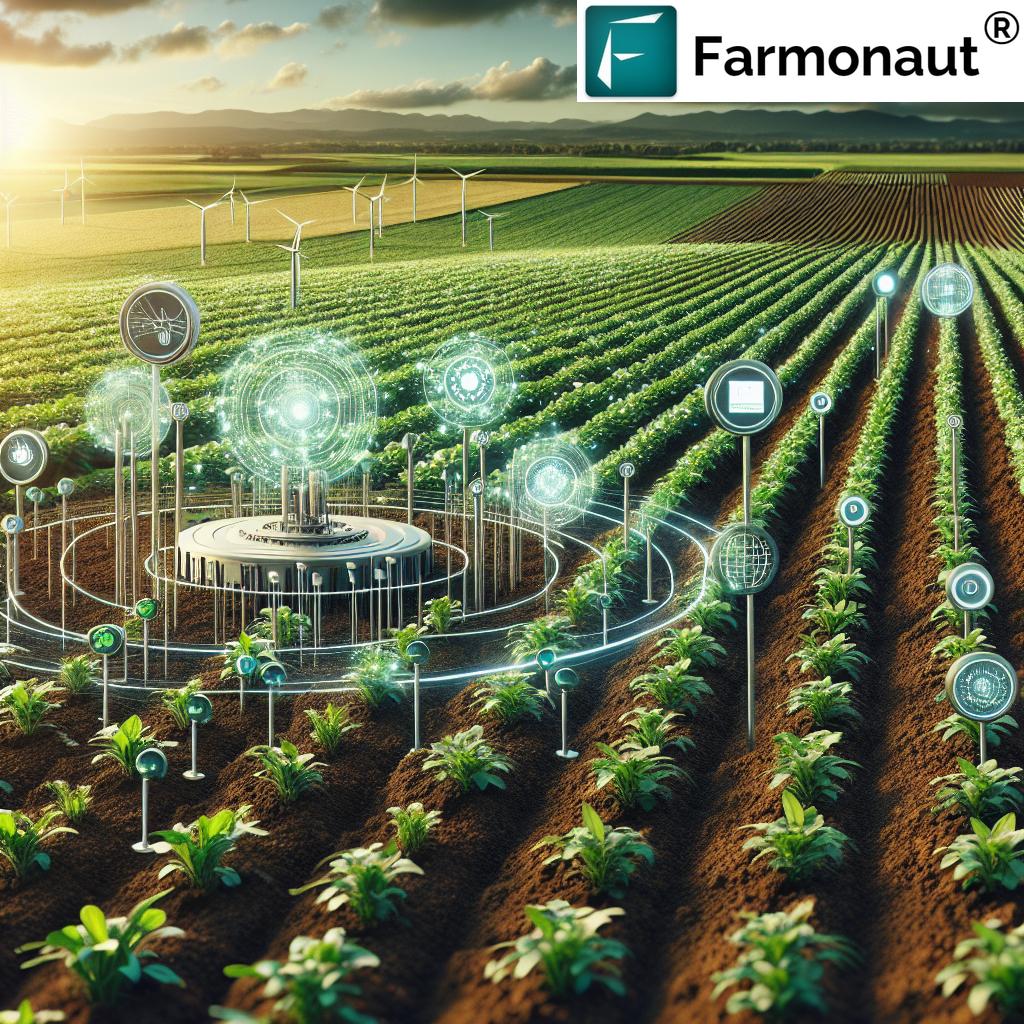Smart Harvesting: 7 Tech Advances in Agriculture
Table of Contents
- Introduction: Revolutionizing Agriculture and Forestry with Smart Harvesting
- Understanding Smart Harvesting
- 7 Tech Advances in Smart Harvesting
- Smart Harvesting Technologies in Agriculture
- Advanced Forestry Systems and Timber Harvesting
- Comparative Feature & Impact Table
- How Farmonaut Empowers Precision Agriculture
- Key Benefits of Smart Harvesting
- Challenges & Considerations in Adoption
- Future of Smart Harvesting
- FAQ: Smart Harvesting in Agriculture & Forestry
- Conclusion
Introduction: Revolutionizing Agriculture and Forestry with Smart Harvesting
In the rapidly evolving landscape of agriculture and forestry, a digital transformation is underway, driven by the integration of smart harvesting technologies. The emergence of automation, AI in agriculture, data analytics, and precision agriculture solutions is reshaping traditional practices, unlocking new levels of efficiency, productivity, and sustainability.
These cutting-edge technologies leverage autonomous machines, robotic crop harvesters, IoT sensors, and intelligent systems to optimize vital tasks such as selecting, identifying, and harvesting crops with minimal waste and costs. In forestry, similar innovations are changing the way we perform selective cutting and manage timber resources, contributing to more sustainable practices.
This comprehensive guide explores the multifaceted aspects of smart harvesting, from its applications in agriculture and forestry, to the challenges faced, and the future prospects of this technology-driven revolution.
Understanding Smart Harvesting: Principles and Technologies
Smart harvesting involves harnessing automation, artificial intelligence (AI), and real-time data analytics to enhance the harvesting process. Autonomous machines, robots, and automated systems identify and select ripe crops or suitable timber with remarkable precision, performing tasks previously carried out by human labor. These technologies employ sophisticated sensors, advanced imaging systems, and machine learning algorithms, working in tandem to:
- Navigate diverse agricultural fields and forestry landscapes
- Detect the color, shape, and size of ripe fruits and vegetables
- Optimize the harvest scheduling and logistics based on real-time data
- Minimize waste and resource usage
- Enhance quality and yield in produce
The primary goal is to reduce labor costs, minimize errors, and improve the overall efficiency and sustainability of agricultural and forestry operations.
7 Tech Advances in Smart Harvesting
Let’s explore the seven most significant advances in smart harvesting that are revolutionizing both agriculture and forestry:
- Robotic Crop Harvesters
(Autonomous robots equipped with sensors and AI to harvest crops with minimal human intervention) - Smart Harvest Scheduling Systems
(AI-driven platforms that analyze sensor data to determine optimal harvesting times) - Precision Agriculture Solutions and Data-driven Management
(Integration of data analytics, IoT, and machine learning for targeted, sustainable resource use in harvesting) - Automated Timber Harvesting
(Autonomous machines for felling, processing, and transporting timber efficiently) - Selective Cutting and Variable Retention Methods
(Technology-enabled ecological forestry management) - Agricultural Drones and Remote Sensing
(Deploying aerial systems to monitor crops, assess ripeness, and guide harvesters) - Blockchain Traceability and Transparency
(Ensuring quality, origin, and sustainability through transparent data systems)
Smart Harvesting Technologies in Agriculture
Robotic Crop Harvesters: Automation Meets Precision
Robotic crop harvesters have been at the forefront of precision agriculture. These autonomous harvesting machines navigate complex fields with minimal human oversight, detect ripe fruits, and pick them based on parameters like color, shape, and size. Examples include:
- Wheeled field robots that utilize advanced cameras and sensors to perform harvesting tasks on fruits, vegetables, and specialty crops
- AI-driven systems that minimize produce damage and reduce waste during picking and sorting
By integrating smart imaging and machine learning algorithms, these robots efficiently identify ripe and market-ready produce, ensuring consistent quality harvest with minimal labor costs and up to 20% increased yield.
Smart Harvest Scheduling: Integrating Data for Optimal Timing
Implementing smart harvest scheduling means leveraging AI to analyze real-time data from IoT sensors. These systems examine variables such as crop maturity, weather forecasts, and soil conditions, guiding farmers to determine the optimal time for harvesting fruits and vegetables—right at peak ripeness.
- Enhances produce quality by ensuring only optimally ripe crops are picked
- Improves market value through consistency and freshness
- Minimizes waste and post-harvest losses
This approach exemplifies the blend of AI in agriculture and smart resource management that modern farms increasingly rely on.
Precision Agriculture Solutions: Data-driven Agricultural Management
Data-driven agricultural management is now a core part of sustainable farming practices. Leveraging real-time data from satellite imagery, drones, and field sensors—which is the foundation of our own Farmonaut platform—enables farm managers to guide harvesting operations with an unparalleled level of precision. These technologies allow for:
- Optimizing machine settings for harvesting equipment based on variable field conditions
- Reducing resource input use, such as fuel and fertilizer, by up to 15%
- Monitoring crop health to identify the most productive sections of a field for targeted harvest
- Supporting environmental stewardship by preserving soil health and enhancing biodiversity
Agricultural Drones and Remote Sensing: Pushing the Boundaries
Agricultural drones and remote sensing are transforming the way farms are managed and harvested. These systems can:
- Survey fields for real-time crop health analysis
- Assess ripeness and disease prevalence using NDVI and multispectral imagery
- Guide autonomous and human-operated harvesters to areas of peak productivity
Aerial data contributes to pinpointing harvest readiness and enhances overall management of agricultural resources—while increasing yield and reducing waste.
Blockchain-Based Traceability: Transparency from Field to Fork
Blockchain traceability solutions bring a new layer of transparency to modern agriculture. By securely documenting every step in the product journey—from planting through harvesting and distribution—consumers and businesses gain:
- Greater trust, knowing the origin and quality of produce
- Confidence in sustainable farming practices
- Reduced fraud in food supply chains
For those seeking end-to-end solutions tailored for traceability in agriculture, the Farmonaut Traceability Platform delivers actionable benefits for quality assurance and compliance with market standards.
Advanced Forestry Systems and Automated Timber Harvesting
Automated Timber Harvesting Machines
Modern forestry is also being transformed by automated timber harvesting, enabled by advanced forestry systems that merge AI, GPS mapping, and robotics to navigate and manage challenging landscapes:
- Autonomous machines can fell, process, and transport timber with greater efficiency and fewer labor requirements
- Equipped with sensors and real-time mapping, machines are able to select the most suitable trees for cutting while preserving ecological balance
- Data-driven planning ensures sustainable timber extraction without overharvesting
This is a clear example of how smart harvesting is reducing environmental impact and supporting responsible forestry.
Selective Cutting & Variable Retention: Enabling Sustainable Forestry Practices
With specialized technologies, forestry management has evolved to support selective cutting and variable retention—methods which require precise planning and execution to balance logging efficiency with long-term sustainability. Technology supports:
- Detailed mapping and tree identification for ecological stewardship
- Optimizing logging routes to reduce fuel usage
- Preserving biodiversity by retaining a selection of trees in each operation
These approaches, enhanced by automation and geospatial data, exemplify the future of sustainable forestry.
Comparative Feature & Impact Table: 7 Smart Harvesting Technologies
| Technology Name | Brief Description | Estimated Efficiency Improvement (%) | Estimated Cost Reduction (%) | Environmental Impact | Potential Yield Increase (%) |
|---|---|---|---|---|---|
| Robotic Crop Harvesters | Autonomous robots that identify and pick ripe crops using AI and sensors | 50-60% | 20-30% | High (Less labor, reduced waste, greater precision) | 15-20% |
| Smart Harvest Scheduling | AI systems analyzing IoT sensor data to schedule optimal harvest times | 20-30% | 10-15% | Medium (Reduces over- or under-ripening, limits waste) | 8-10% |
| Precision Agriculture Solutions | Data-driven farm management leveraging satellites, IoT, and ML | 35-45% | 25-30% | High (Resource optimization, less inputs, reduced emissions) | 12-18% |
| Automated Timber Harvesting | Autonomous forestry machines with AI & sensors for timber extraction | 40-50% | 25-35% | Medium (Controls deforestation, targeted extraction) | 10-12% |
| Selective Cutting & Variable Retention | Digital tools supporting targeted and ecological tree selection | 25-35% | 10-15% | High (Biodiversity preservation, sustainable forestry) | 5-10% |
| Agricultural Drones & Remote Sensing | Drones/satellites delivering real-time crop health and ripeness data | 30-40% | 18-22% | High (Reduces resource use, early detection of issues) | 10-14% |
| Blockchain Traceability | Blockchain-backed systems for traceable, secure product provenance | 12-18% | 6-10% | Medium (Fewer recalls, higher consumer trust) | 3-7% |
How Farmonaut Empowers Precision Agriculture and Smart Harvesting
At Farmonaut, we are committed to making precision agriculture affordable, scalable, and accessible. By integrating satellite-based crop health monitoring, robust AI advisory systems, and blockchain traceability tools into an easy-to-use platform, we empower farmers to optimize harvesting operations and maximize farm profits.
- Crop Health Monitoring: Real-time insights via satellite-driven NDVI, soil moisture, and vegetation health analyses
- Jeevn AI Advisory: Personalized, actionable crop management guidance based on advanced data analytics
- Blockchain Traceability: Verifiable supply chains for transparency, accessible via our traceability solution
- Fleet and Resource Management: Efficient logistics and resource usage (explore this on Farmonaut’s fleet management platform)
- Carbon Footprinting: Track and reduce your environmental footprint (carbon impact dashboard)
- Loan and Insurance Verification: Streamlined crop loan and insurance processing with satellite-based verification (crop loan & insurance solutions)
- Large-Scale & Forest Management: Scalable tools for government, NGOs, and plantations—see Agro-Admin platform
Our platform provides API integration for developers and businesses: Farmonaut API Access (developer documentation here).
Try Farmonaut now—whether you are an individual farmer or manage large agricultural land, our data-driven tools support sustainable farming practices and high-quality produce outcomes.
Explore our subscription options below:
Key Benefits of Smart Harvesting Technologies
The adoption of smart harvesting technologies offers a multitude of benefits across the supply chain, from the farm field to the forest plantation:
- Increased Efficiency: Automation accelerates the harvest and sorting processes, reducing cycle time and boosting productivity.
- Reduced Costs: Lower labor costs, better resource allocation, and less fuel consumption lead to significant long-term savings.
- Enhanced Quality & Yield: Precision systems only collect the highest-quality crops and timber, resulting in better market value and higher overall yields.
- Sustainability & Resource Stewardship: By optimizing resource usage and employing selective cutting methods, these technologies help preserve ecosystems and reduce environmental impact.
- Scalability: Smart harvesting technologies can be deployed at any scale, suitable for smallholder farmers or large forestry operations.
- Data-driven Decision-Making: Access to real-time data allows continuous improvement, better risk management, and transparent reporting.
Challenges & Considerations in Adoption
While the benefits of smart harvesting are compelling, several hurdles must be considered for successful adoption across the globe:
- High Initial Investment: Advanced harvesting machines and sensor networks may be expensive for small farms and developing regions.
- Technical Complexity: Deploying AI-based and autonomous systems requires specialized technical skills and ongoing management.
- Data Management: The massive amount of generated sensor and analytics data must be stored, processed, and interpreted effectively.
- Regulatory Compliance: Different locales may have varying rules about automation, data privacy, and environmental regulations.
- Societal Impact: Reducing human labor raises questions around employment and workforce transition in rural economies.
Forward-thinking platform providers address many of these challenges by making precision agriculture accessible, supporting all stakeholders in efficient and sustainable growth.
Future of Smart Harvesting: Trends and Prospects
The future of smart harvesting is one of rapid acceleration. As AI, robotics, IoT, and smart data analytics continue to evolve:
- Autonomous machines and advanced systems will become more affordable, robust, and scalable—driving sustainable agricultural and forestry practices worldwide.
- The global market for smart harvesting is set to grow as demand for food security, traceability, and environmentally responsible production rises.
- Cloud-based precision agriculture solutions and API-accessible tools (see Farmonaut API and Developer Docs) will bridge the technology gap even for resource-limited users.
- Enhanced traceability and sustainability reporting will further differentiate high-quality market produce.
Technology will continue to play a vital role in combating climate change, improving food supply resilience, and supporting both large-scale and smallholder producers in global agricultural systems.
FAQ: Smart Harvesting in Agriculture & Forestry
What is smart harvesting?
Smart harvesting is the process of using automation, AI, robotics, and data-driven systems to optimize the collection of crops or timber, reducing labor inputs, minimizing waste, and improving produce quality.
How do autonomous harvesting machines work?
These machines use advanced sensors and imaging technologies to navigate fields, identify ripe produce by analyzing shape, color, and size, and accurately pick or collect crops with minimal human intervention.
What are the main benefits of adopting smart harvesting technologies?
Key benefits include increased efficiency, reduced operational costs, enhanced produce quality, higher yields, resource savings, and more sustainable practices in both agriculture and forestry.
Are there environmental advantages to smart harvesting?
Yes! Data-driven systems reduce resource usage, preserve soil health, and improve sustainability through reduced emissions and more efficient land management.
How accessible are these technologies for smallholder farmers?
While early adoption was expensive, advances in cloud software, satellite data platforms (like Farmonaut), and subscription services are making precision agriculture affordable and scalable for farms of all sizes.
How does Farmonaut fit into the smart harvesting revolution?
We offer satellite-based crop health monitoring, AI-driven advisory systems, blockchain traceability, resource management, and environmental tracking that enable farmers to optimize smart harvesting, boost yields, and ensure sustainability. Our platform is available on web, Android, iOS, and via API.
Can smart harvesting be used in forestry too?
Absolutely. Automated timber harvesting machines, advanced forestry systems, and selective cutting tools driven by smart data help manage timber sustainably and efficiently.
Conclusion
In summary, smart harvesting is revolutionizing the way we approach agriculture and forestry. By embracing automation, AI, and data-driven systems, the industry is not only addressing labor shortages and efficiency challenges but also setting new benchmarks for sustainability and produce quality.
With ongoing advancements and wider adoption, smart harvesting technologies will continue to empower farmers, agricultural managers, and foresters worldwide—paving the way for a sustainable future with higher yields, lower costs, and a healthier planet.






